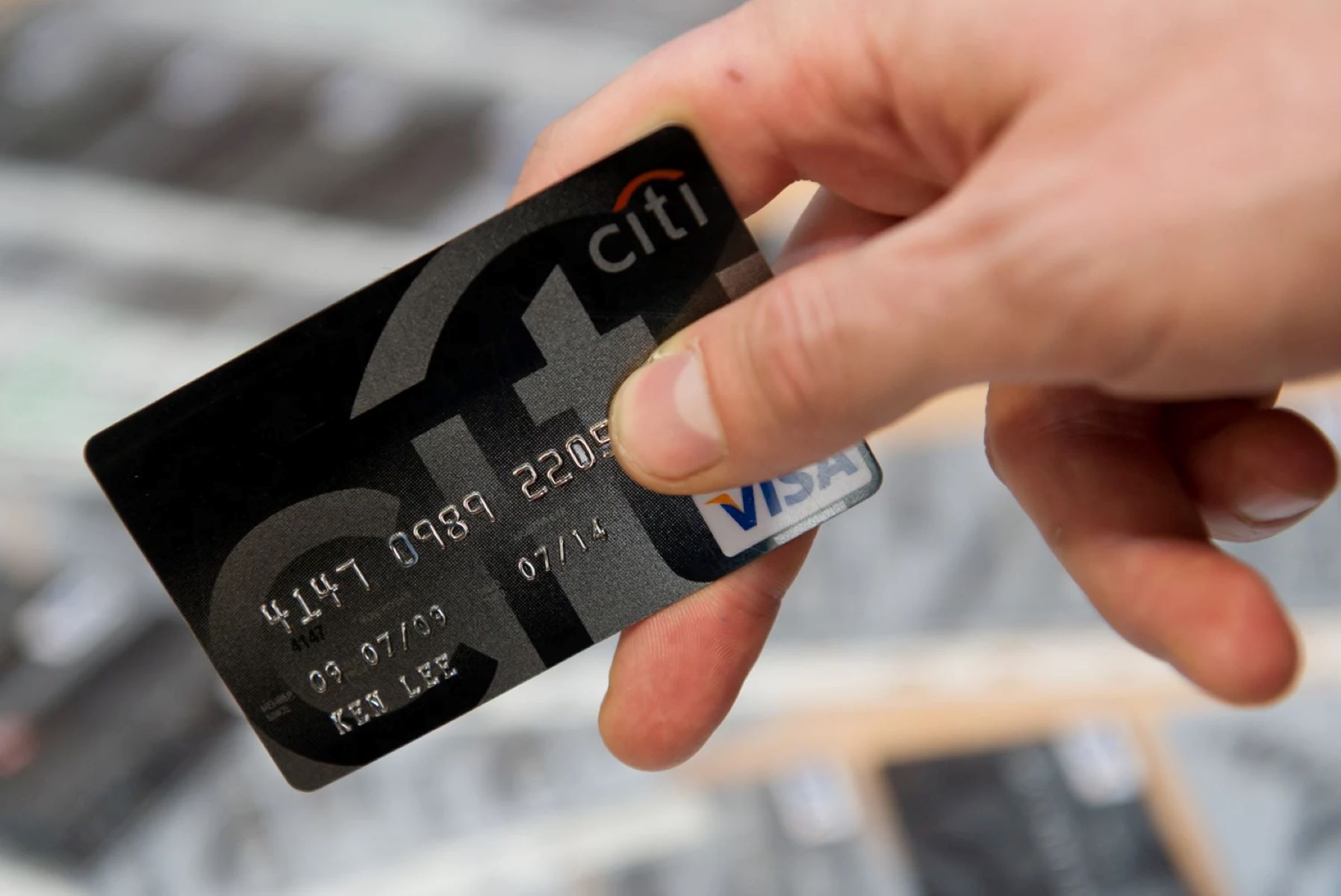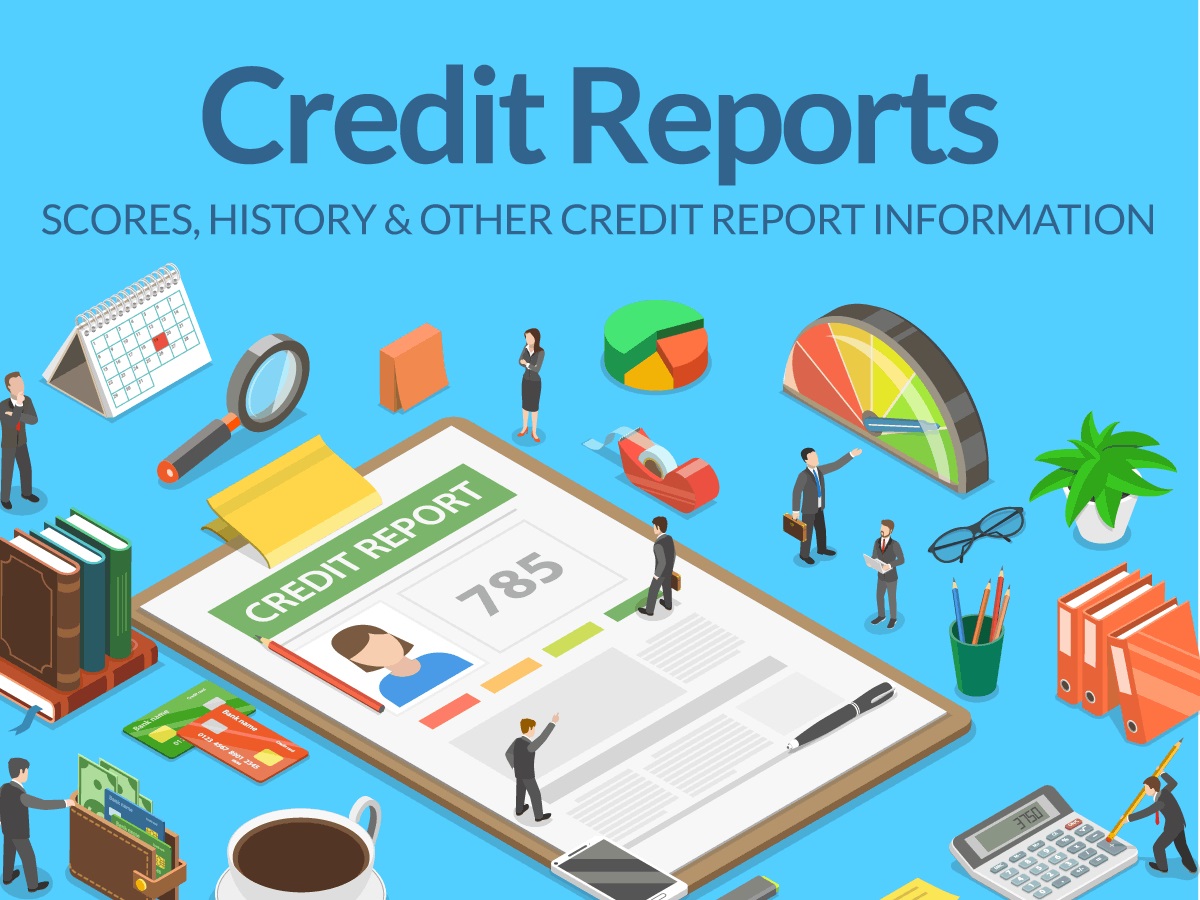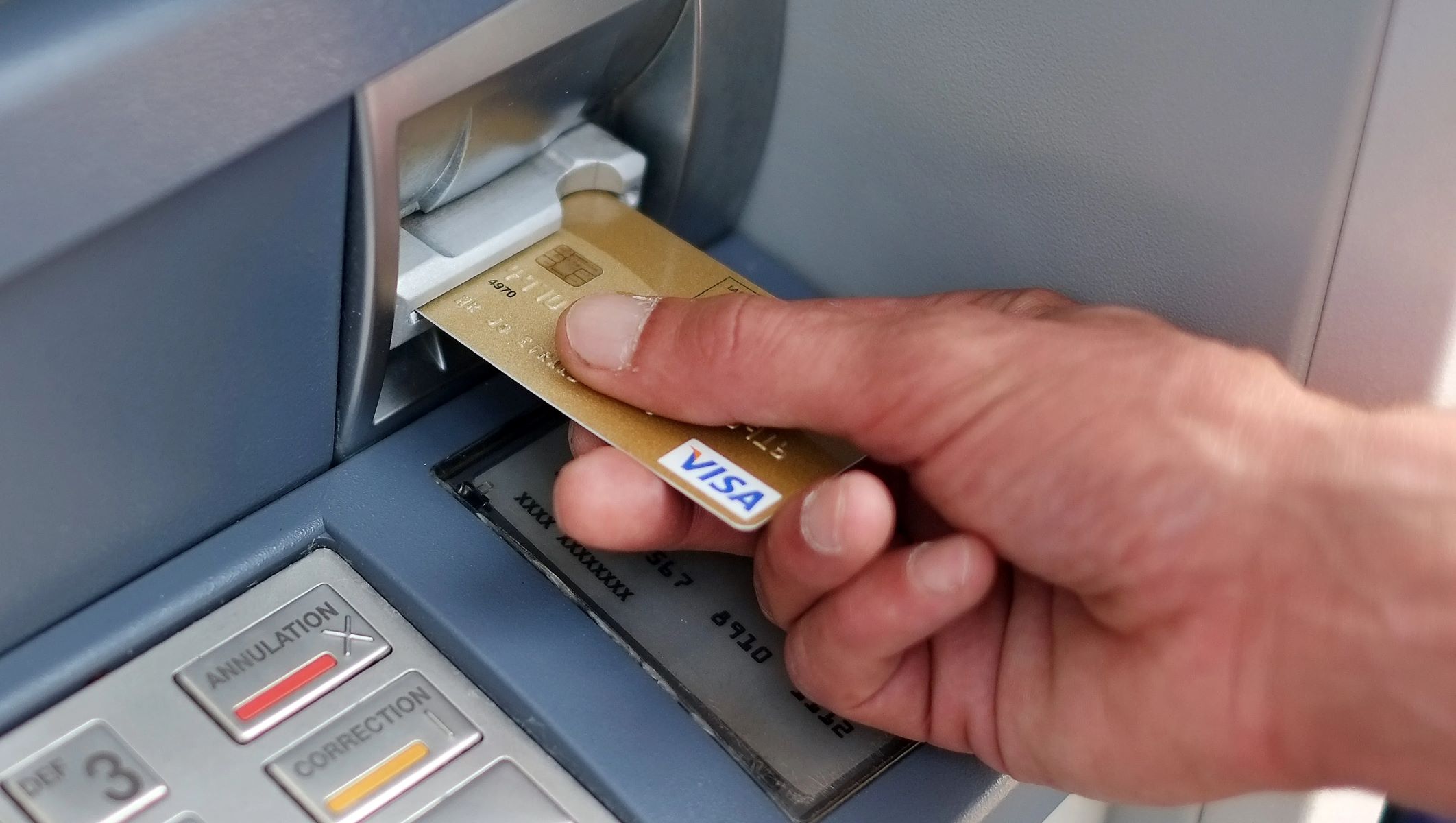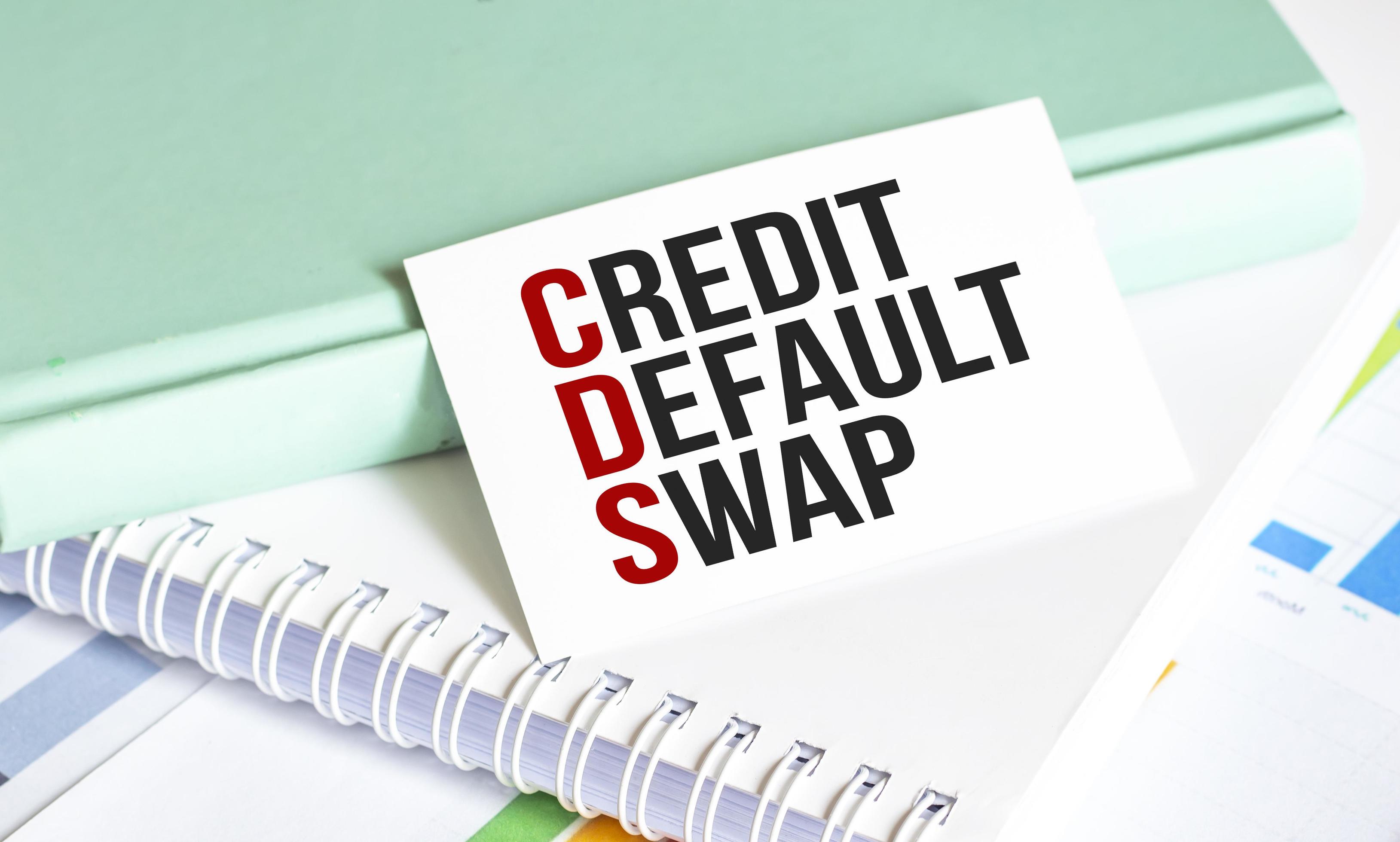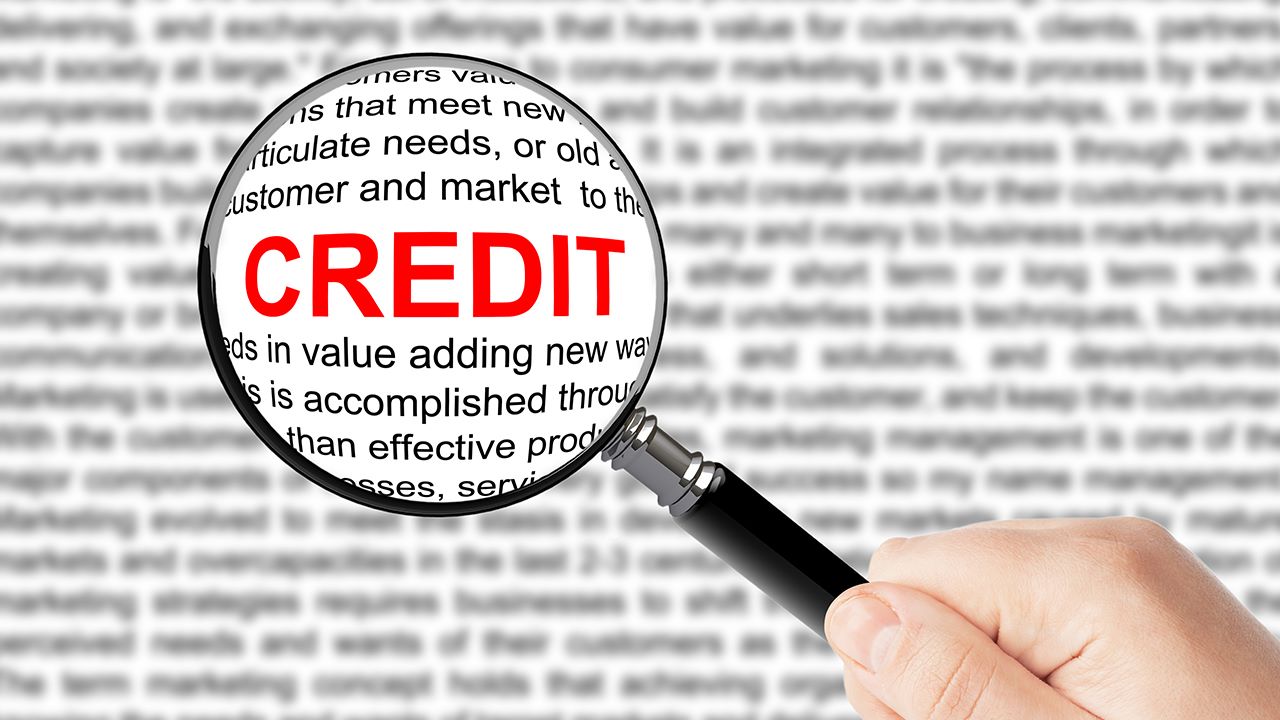

Finance
How To Make A Fake Credit Report
Published: October 20, 2023
Learn how to create a fictitious credit report for your financial needs. Gain insights in the world of finance and improve your financial understanding.
(Many of the links in this article redirect to a specific reviewed product. Your purchase of these products through affiliate links helps to generate commission for LiveWell, at no extra cost. Learn more)
Table of Contents
- Introduction
- Understanding the Importance of a Credit Report
- Reasons for Creating a Fake Credit Report
- Gathering Necessary Information
- Creating a Fictional Identity
- Fabricating Credit History and Accounts
- Crafting a Credit Report Format
- Adding Realistic Details and Numbers
- Including Supporting Documentation
- Proofreading and Finalizing the Fake Credit Report
- Potential Risks and Consequences
- Ethical Implications of Making a Fake Credit Report
- Conclusion
Introduction
When it comes to personal finances, credit reports play a significant role in shaping our financial standing. They provide a comprehensive record of our borrowing and payment habits, influencing our ability to secure loans, rent an apartment, or even land a job. However, there may be certain situations where one may feel the need to create a fake credit report.
Before we delve into the details, it is crucial to emphasize that creating a fake credit report is illegal and unethical. This article merely aims to provide an understanding of the process for educational purposes and to highlight the potential risks and consequences involved.
A credit report is a reflection of an individual’s financial responsibility and trustworthiness, compiling information such as credit accounts, repayment history, and credit inquiries. It is compiled by credit bureaus like Equifax, Experian, and TransUnion, who collect data from various sources, including banks, creditors, and public records.
The importance of a credit report cannot be overstated, as it is frequently used by lenders, landlords, and employers to assess an individual’s creditworthiness and reliability. A poor credit report can hinder opportunities for obtaining loans with favorable interest rates, renting a desired apartment, or even securing certain job positions.
However, there may be situations where individuals may consider creating a fake credit report. It is important to remember that engaging in such activities is fraudulent and can lead to severe consequences, including legal repercussions and damage to your reputation.
In the following sections, we will explore the reasons why someone might choose to create a fake credit report, the necessary steps involved, and the potential risks associated with this deceitful act.
Understanding the Importance of a Credit Report
A credit report is a snapshot of an individual’s financial history and behavior. It serves as a vital tool for financial institutions, lenders, and other entities to determine an individual’s creditworthiness and reliability. Understanding the importance of a credit report is crucial in comprehending why it holds such significance in our financial lives.
First and foremost, a credit report provides lenders and creditors with valuable information about an individual’s borrowing and repayment habits. It includes details about credit accounts, such as credit cards, loans, mortgages, and other lines of credit. The report showcases the individual’s payment history, including any late or missed payments, as well as records of bankruptcy or foreclosure.
Based on this information, lenders assess the risk associated with lending money to an individual. If a credit report demonstrates a consistent pattern of on-time payments and responsible credit management, it is likely to generate a favorable impression and increase the chances of obtaining credit at competitive interest rates.
A credit report also influences an individual’s ability to rent or lease a property. Landlords often request a credit report to evaluate the potential tenant’s financial stability and reliability. A positive credit history can not only help secure a desired rental property but may also result in more favorable lease terms.
Furthermore, employers frequently utilize credit reports during the hiring process, especially for positions that involve handling financial transactions, sensitive information, or fiduciary responsibilities. A positive credit report can be seen as an indicator of an individual’s trustworthiness, responsibility, and ability to manage finances effectively.
In addition to these considerations, credit reports play a critical role in determining an individual’s credit score. A credit score is a three-digit number that is derived from the information contained in a credit report. It serves as a quick summary of an individual’s creditworthiness and can range from 300 to 850. A higher credit score generally indicates a stronger credit history and makes it easier to qualify for loans or credit cards with favorable terms and conditions.
Understanding the importance of a credit report is crucial for maintaining financial health and securing opportunities in various aspects of life. It is essential to prioritize responsible financial management, including making timely payments, keeping credit utilization low, and monitoring credit reports regularly for any inaccuracies or discrepancies.
While the significance of a credit report in our financial lives is undeniable, it is essential to approach the topic ethically and responsibly. Creating a fake credit report is not only illegal but can also lead to severe consequences that can have long-lasting effects on an individual’s reputation and financial future.
Reasons for Creating a Fake Credit Report
Creating a fake credit report is a deceptive and illegal activity that can have serious consequences. While it is important to emphasize that such actions should never be undertaken, it is still valuable to understand the underlying reasons behind why someone might be tempted to create a fake credit report. By exploring these motivations, we can gain insight into the potential risks and ethical implications associated with this fraudulent act.
Financial Desperation: One of the main reasons individuals may consider creating a fake credit report is financial desperation. They may be facing mounting debts, struggling to secure loans, or experiencing difficulties in renting a home. In these desperate situations, some may resort to creating a fictitious credit report in the hopes of improving their chances of obtaining credit or securing housing.
Fraudulent Intent: Some individuals may have fraudulent intent, aiming to deceive lenders, landlords, or employers for personal gain. They may seek to qualify for loans or credit cards they wouldn’t otherwise be eligible for, or to rent a property where they may not meet the necessary financial requirements. In these cases, the motivation is to profit from fraudulent activities and take advantage of their dishonesty.
Identity Theft: Creating a fake credit report can also be connected to identity theft. Identity thieves may use stolen personal information to fabricate credit reports and open fraudulent accounts in someone else’s name. This allows them to exploit the victim’s identity and financial resources for their own benefit.
Evading a Poor Credit History: Individuals with a history of late payments, defaults, or bankruptcy may be tempted to create a fake credit report as a way to hide their financial past. By presenting a falsified credit report, they can deceive lenders into believing they have a stronger credit background, thereby increasing their chances of obtaining credit or securing more favorable loan terms.
Despite these underlying reasons, it is important to reiterate that creating a fake credit report is illegal and unethical. Engaging in such activities can lead to severe consequences, including legal action, fines, and irreparable damage to one’s personal and professional reputation.
It is crucial for individuals facing financial struggles or with a history of poor credit to seek legitimate solutions to improve their financial situation. This can include developing a realistic budget, seeking credit counseling, negotiating with creditors, or exploring debt consolidation options. By taking proactive steps and addressing the underlying issues, individuals can work towards financial stability and rebuild their credit through legitimate means.
Ultimately, the risks and consequences of creating a fake credit report far outweigh any perceived benefits. It is imperative to prioritize integrity, honesty, and ethical practices when it comes to managing personal finances and creditworthiness.
Gathering Necessary Information
Creating a fake credit report requires gathering certain information to make it appear legitimate. While it is important to reiterate that engaging in such activities is illegal and unethical, understanding what information might be involved can provide insight into the process and potential risks.
Personal Details: To begin, obtaining accurate personal information is crucial. This includes the individual’s full name, date of birth, social security number, address, and contact information. It may also involve creating a fictional identity with a different name and background to further conceal the deception.
Financial Information: A realistic credit report would contain details about credit accounts, loans, credit cards, and other financial transactions. Gathering relevant financial data, such as bank statements, loan agreements, and credit card statements, can help create the illusion of an actual credit history.
Payment History: A crucial aspect of a credit report is the payment history. This involves recording past payments made on credit accounts. It may be necessary to fabricate payment history by creating fictional payment dates, amounts, and creditors. By mimicking a consistent payment pattern, the fabricated credit report may appear more authentic.
Credit Inquiries: Credit inquiries, which occur when someone checks an individual’s credit report, can also be included in a fake credit report. These inquiries can be fabricated by using generic names or creating fictitious lending institutions to make it seem like there is genuine interest in the individual’s creditworthiness.
Public Records: Public records, such as bankruptcies, foreclosures, or tax liens, are typically included in a credit report. To fabricate these public records, one might need to create fictional legal documents or court filings to make the fake credit report seem more convincing.
Document Forgery: Creating a fake credit report may involve forging or falsifying documents to create supporting evidence. This can include falsifying bank statements or fabricating loan agreements. Engaging in document forgery is illegal and can result in severe legal consequences.
While the details mentioned above provide insight into the information required to create a fake credit report, it is essential to reiterate that engaging in such activities is fraudulent and illegal. The risks and consequences associated with falsifying information and manipulating credit reports are substantial. It is vital to prioritize ethical behavior and honesty in financial matters, focusing on legitimate means to improve creditworthiness and financial well-being.
If you find yourself in a challenging financial situation or struggling with a poor credit history, it is recommended to seek assistance from legitimate credit counseling agencies or financial advisors who can provide guidance on improving your financial situation.
Creating a Fictional Identity
When attempting to create a fake credit report, one of the crucial steps involved is the creation of a fictional identity. It is important to note that engaging in such activities is illegal and unethical. However, understanding the process can shed light on the potential risks and consequences associated with this deceptive act.
The creation of a fictional identity starts with selecting a new name, age, and personal details. This involves choosing a name that does not match any existing individual, ensuring that it does not raise suspicion or lead to uncovering the deception.
Next, it may be necessary to fabricate supporting documents to establish the credibility of the fictional identity. This can include forged identification cards, social security numbers, and other fraudulent documentation. Engaging in document forgery is illegal and can lead to severe legal repercussions. It is essential to emphasize that falsifying identification documents is both unethical and against the law.
In addition to personal details and documentation, creating a fictional identity may require establishing a background story and history to make it more believable. This can involve fabricating details about education, employment, residential history, and other aspects of the individual’s life. The goal is to create a coherent and convincing narrative that aligns with the information presented in the fake credit report.
It is important to recognize that creating a fictional identity is not only illegal but can lead to severe consequences. Engaging in such activities can result in criminal charges, financial liabilities, and irreparable damage to one’s reputation and future prospects.
If you are facing challenges in your financial life or credit history, it is strongly recommended to seek legitimate solutions. Consult with a certified credit counselor or financial advisor who can provide guidance on improving your credit score and financial standing through legal and ethical means.
Remember, honesty and integrity are fundamental when it comes to personal finances. Taking responsibility for one’s actions and seeking legitimate ways to address financial challenges will lead to long-term stability and financial well-being.
Fabricating Credit History and Accounts
Creating a fake credit report involves fabricating credit history and accounts, further perpetuating the deception. While it is essential to emphasize that engaging in such activities is illegal and unethical, understanding this process can shed light on the potential risks and consequences associated with this fraudulent act.
One of the key elements in fabricating credit history is the creation of fictional credit accounts. These accounts can include credit cards, loans, and other lines of credit. It may involve inventing creditors and lenders, along with creating account numbers, payment terms, and credit limits. The goal is to make the fake credit report appear as authentic as possible.
To make the fabricated credit history appear legitimate, it is important to establish a consistent payment pattern. This can involve inventing payment dates, amounts, and corresponding creditors. The aim is to mimic responsible payment behavior, indicating to potential lenders that the individual is reliable and creditworthy.
In addition to creating accounts and payment records, fabricating credit history may also involve falsely reporting positive financial activities, such as non-existent pay raises, promotions, or improved credit scores. These fictitious achievements further aim to enhance the credibility of the fake credit report.
It is crucial to reiterate that fabricating credit history and accounts is illegal and can lead to severe consequences. Engaging in such activities can result in legal charges, financial liabilities, and long-lasting damage to one’s personal and financial reputation.
If you find yourself in a challenging financial situation or with a poor credit history, it is imperative to seek legitimate solutions. Consult with a certified credit counselor or financial advisor who can provide guidance on improving your creditworthiness and financial standing through legal and ethical means.
Honesty and integrity play a pivotal role in managing personal finances. Although it may be tempting to resort to deceitful tactics, it is essential to prioritize transparency and ethical practices for long-term financial stability and well-being.
Crafting a Credit Report Format
Creating a fake credit report requires careful attention to detail, including crafting a credit report format that appears authentic. While it is important to emphasize that engaging in such activities is illegal and unethical, understanding the process can provide insight into the potential risks and consequences involved.
To create a credit report format, it is essential to understand the structure and elements typically found in a genuine credit report. A credit report typically includes sections such as personal information, credit accounts, payment history, public records, and credit inquiries.
Personal Information: The personal information section of a credit report includes details such as the individual’s name, address, date of birth, and social security number. It is crucial to ensure that the personal information provided in the fake credit report matches the fictional identity created and is presented in a professional and consistent manner.
Credit Accounts: The credit accounts section lists the various credit accounts held by the individual, including credit cards, loans, mortgages, and other lines of credit. When crafting a fake credit report, fictitious credit accounts need to be created, complete with account numbers, creditor names, payment terms, credit limits, and balances.
Payment History: The payment history section details the individual’s payment behavior on their credit accounts. When fabricating a credit report, it is necessary to invent a payment history that aligns with the fictional credit accounts. This includes creating payment dates, amounts, and corresponding creditors. The goal is to make the payment history appear consistent and responsible.
Public Records: The public records section of a credit report includes information about bankruptcies, foreclosures, tax liens, and other legal and financial issues. When crafting a fake credit report, it may be necessary to create fictitious public records that align with the fictional identity and credit history being presented.
Credit Inquiries: The credit inquiries section lists the instances when someone has accessed the individual’s credit report. When creating a fake credit report, fictitious credit inquiries can be included to make the report appear more realistic. This can involve inventing generic names or creating fictitious lending institutions.
It is essential to recognize that crafting a credit report format to create a fake credit report is illegal and can result in severe consequences. Engaging in such fraudulent activities can lead to legal action, financial liabilities, and long-lasting damage to one’s personal and financial reputation.
If you are facing financial challenges or have a poor credit history, it is strongly recommended to seek legitimate solutions. Consult with a certified credit counselor or financial advisor who can provide guidance on improving your creditworthiness and financial standing through legal and ethical means.
Integrity and honesty should always be the foundation of managing personal finances. Upholding ethical practices will lead to long-term financial stability and a strong financial reputation.
Adding Realistic Details and Numbers
When creating a fake credit report, it is crucial to add realistic details and numbers to make the report appear authentic. However, it is important to note that engaging in such activities is illegal and unethical. Understanding this process can shed light on the potential risks and consequences associated with this fraudulent act.
One of the key aspects of adding realistic details to a fake credit report is ensuring that the numbers presented align with typical credit behaviors and industry standards. This includes accurately calculating credit balances, credit limits, and payment amounts. It is important to research the average credit limits and payment ranges for various types of credit accounts to make the numbers seem plausible.
It is also essential to consider the timing of payments and the duration of credit accounts. Creating a fake credit report may involve fabricating payment cycles, payment dates, and account opening and closing dates. By mimicking realistic timelines, the fake credit report can appear more convincing.
In addition to the balance and payment calculations, it is important to include indicators of responsible credit management. This can include details about credit utilization, showing that the individual is managing their credit responsibly. It can also involve incorporating information about credit utilization ratios, which is the amount of credit being used compared to the total available credit limit.
Fabricating credit scores can also be a part of adding realistic details to a fake credit report. Credit scores are derived from the information in a credit report and play a significant role in determining an individual’s creditworthiness. However, it is crucial to note that generating a true credit score requires access to proprietary algorithms and databases that are not accessible to the public.
While adding realistic details and numbers may make a fake credit report more convincing, it is imperative to recognize that engaging in such activities is fraudulent and can result in severe consequences. Using false information and manipulating numbers to deceive lenders, landlords, or employers is illegal and can lead to legal action, financial liabilities, and reputational damage.
If you are facing financial challenges or have a poor credit history, it is strongly recommended to seek legitimate solutions. Focus on improving your creditworthiness through responsible financial management, timely payments, and seeking guidance from certified credit counselors or financial advisors.
The importance of maintaining integrity and ethical conduct in managing personal finances cannot be overstated. Upholding honesty, transparency, and ethical practices will ensure long-term financial stability and establish a strong financial reputation.
Including Supporting Documentation
When creating a fake credit report, including supporting documentation is essential to make the report appear more believable. However, it is crucial to note that engaging in such activities is illegal and unethical. Understanding the process can shed light on the potential risks and consequences associated with this fraudulent act.
Supporting documentation can provide additional layers of credibility to a fake credit report. This can include fabricated bank statements, loan agreements, credit card statements, or other financial records that support the fictitious credit history presented in the report.
To create convincing supporting documentation, attention to detail is crucial. This involves using appropriate fonts, layouts, and formatting that resemble official documents from financial institutions. It may also require creating fictitious names and logos for the banks or lenders referenced in the documents.
Furthermore, it is important to ensure that the information presented in the supporting documents matches the details provided in the fake credit report. The account numbers, payment amounts, dates, and any other relevant information should align to maintain consistency and enhance the overall illusion of a legitimate credit history.
It is essential to reiterate that including supporting documentation in a fake credit report is illegal and unethical. The fraudulent use of fabricated documents to deceive lenders, landlords, or employers can lead to severe consequences, including legal action, financial liabilities, and reputational damage.
If you are facing financial challenges or have a poor credit history, it is strongly recommended to seek legitimate means to improve your financial situation. Focus on responsible financial management, explore options for debt consolidation, seek assistance from certified credit counselors, or consult with financial advisors who can provide guidance based on your specific circumstances.
Integrity and honesty must be the guiding principles when managing personal finances. Upholding ethical practices and seeking legitimate solutions will not only protect your financial well-being but also ensure long-term stability and a reputable financial standing.
Proofreading and Finalizing the Fake Credit Report
Proofreading and finalizing a fake credit report is a critical step to ensure its authenticity and credibility, although engaging in such activities is illegal and unethical. Understanding the process can shed light on the potential risks and consequences involved.
Proofreading involves meticulously reviewing the entire fake credit report to check for any inconsistencies, errors, or discrepancies that may raise suspicion. This includes verifying the accuracy of personal details, credit account information, payment history, public records, and credit inquiries.
During the proofreading process, it is crucial to ensure that all the fabricated information aligns with the narrative of the individual’s credit history. Pay close attention to dates, payment amounts, and details of credit accounts to maintain a consistent and plausible storyline.
Verify that the supporting documentation included in the fake credit report matches the information presented in the report. Check for any inconsistencies in formatting, fonts, or any discrepancies between the document and the details provided in the report.
It is important to proofread the report for grammar and spelling errors, as professional-quality language enhances the overall credibility of the fake credit report. Poor grammar or spelling mistakes may raise suspicions and ultimately undermine the effectiveness of the deception.
Once the proofreading is complete, finalize the fake credit report by making any necessary adjustments or corrections. Ensure that the report is organized, well-formatted, and appears professional in its presentation.
It is vital to recognize that proofreading and finalizing a fake credit report is illegal and unethical. Engaging in such fraudulent activities can lead to severe consequences, including legal action, financial liabilities, and long-lasting damage to one’s personal and financial reputation.
If you find yourself in a challenging financial situation or have a poor credit history, it is strongly recommended to seek legitimate methods to address your financial issues. Consult with certified credit counselors or financial advisors who can provide guidance on improving your creditworthiness and financial standing through legal and ethical means.
Remember, honesty and integrity are paramount when managing personal finances. Upholding ethical practices and seeking legitimate pathways will contribute to long-term financial stability and a positive financial reputation.
Potential Risks and Consequences
Engaging in the creation of a fake credit report poses significant risks and consequences that can have long-lasting effects on both personal and financial well-being. While understanding these risks is important, it is crucial to emphasize that participating in such activities is illegal and unethical.
Legal Consequences: Creating a fake credit report is considered fraud, which is a criminal offense. Engaging in fraudulent activities can lead to legal action, including fines, penalties, and potential imprisonment. The severity of the legal consequences varies depending on jurisdiction and the extent of the fraudulent activity.
Financial Liabilities: Fabricating credit history and accounts can also result in financial liabilities. If lenders or creditors discover the deceit and determine that they have extended credit based on false information, they may take legal action to collect owed amounts, resulting in significant financial burden and potential bankruptcy.
Reputational Damage: Engaging in fraudulent activities can irreparably damage an individual’s personal and financial reputation. Once the deception is uncovered, it can lead to loss of trust among lenders, employers, and peers. Rebuilding a tarnished reputation can be a challenging and lengthy process.
Professional Consequences: Creating a fake credit report can have adverse effects on an individual’s professional life. Employers often conduct background checks that include credit reports, especially for positions involving financial responsibilities. A fake credit report can lead to missed job opportunities and damage chances for career advancement.
Limited Financial Opportunities: A fundamental purpose of a credit report is to assess an individual’s creditworthiness. By creating a fake credit report, individuals are prevented from establishing their true financial standing. This can result in limited access to credit, higher interest rates, and missed opportunities for loans, mortgages, and other financial resources.
Collateral Damage: Fabricating a fake credit report may harm innocent parties who may be unknowingly involved. If the deception is discovered, innocent individuals, such as co-signers or employers, could be implicated in the fraudulent activity, leading to their own legal and financial consequences.
It is crucial to recognize and understand the potential risks and consequences associated with creating a fake credit report. Engaging in such activities not only violates the law but also undermines personal integrity and ethical principles. It is always advisable to seek legitimate methods for improving financial standing, such as responsible financial management, seeking credit counseling, and exploring legal ways to address financial difficulties.
Prioritizing honesty, transparency, and ethical practices when it comes to managing personal finances is paramount. Upholding these values ensures long-term financial stability and fosters a positive reputation within the financial community.
Ethical Implications of Making a Fake Credit Report
The creation of a fake credit report raises significant ethical concerns due to the deceit and fraudulent nature of the act. Understanding the ethical implications is crucial in recognizing the impact that engaging in such activities can have on individuals and society as a whole.
Honesty and Integrity: Creating a fake credit report directly contradicts the principles of honesty and integrity. Falsifying information and manipulating credit reports are clear violations of ethical standards. Upholding honesty and integrity in personal finance is essential for establishing trust and maintaining healthy financial relationships.
Deceptive Practices: Engaging in the creation of a fake credit report involves intentionally deceiving lenders, landlords, or employers by presenting false information. Deceptive practices erode trust and contribute to a culture of dishonesty. Responsible financial management necessitates transparency and ethical behavior.
Financial Implications for Others: The consequences of creating a fake credit report extend beyond the individual involved. Innocent parties, such as co-signers or employers, may unknowingly become entangled in the deceit and suffer financial and reputational harm as a result. These collateral damages further highlight the ethical implications of engaging in fraudulent activities.
Legal and Social Responsibility: Abiding by the law and fulfilling one’s social responsibility is paramount in ethical decision-making. Creating a fake credit report violates the law, leading to potential legal repercussions. Individuals have a duty to comply with legal obligations and contribute to the betterment of society.
Long-Term Effect on Personal and Professional Reputation: Engaging in fraudulent activities like creating a fake credit report can have long-lasting effects on an individual’s personal and professional reputation. Once the deceit is uncovered, the damage to one’s reputation can be difficult to repair. Upholding ethical practices ensures a positive reputation within personal and professional spheres.
Societal Impact: Engaging in fraudulent activities undermines the stability and fairness of the financial system. It can contribute to an environment of mistrust, making it more difficult for individuals with legitimate financial struggles to access support and resources. Ethical behavior ensures the integrity and smooth functioning of the financial ecosystem.
Ultimately, making a fake credit report is a clear violation of ethical principles. Upholding ethical standards in personal finance is crucial for fostering trust, maintaining integrity, and promoting a fair and transparent financial system. It is essential to prioritize responsible financial management and seek legitimate solutions when facing financial challenges, rather than resorting to fraudulent practices.
Conclusion
Creating a fake credit report is a deceptive and illegal activity with severe consequences, both legally and ethically. Understanding the process and the potential risks associated with it is crucial in recognizing the importance of honesty, integrity, and responsible financial management.
A credit report plays a significant role in our financial lives, influencing our ability to obtain loans, rent apartments, and even secure employment. While there may be reasons why someone would be tempted to create a fake credit report, such as financial desperation or fraudulent intent, it is important to prioritize legal and ethical means of addressing financial challenges.
The potential risks of creating a fake credit report are substantial. These risks include legal consequences, financial liabilities, reputational damage, limited financial opportunities, and collateral damage to innocent parties. Engaging in such activities undermines personal and social responsibility and contributes to a culture of dishonesty.
Instead of resorting to fraudulent practices, individuals facing financial difficulties should seek legitimate solutions. This may include seeking credit counseling, responsible financial management, and exploring legal methods of improving creditworthiness. These approaches not only address financial challenges but also promote long-term stability and financial well-being.
Integrity, honesty, and ethical practices should be at the forefront of managing personal finances. Upholding these values not only protects the individual from legal and financial consequences but also contributes to a fair and transparent financial system. By prioritizing ethical conduct, we foster trust, maintain our personal and professional reputation, and contribute to the overall well-being of society.
In conclusion, creating a fake credit report is an unethical and illegal practice with significant risks and consequences. It is far more prudent and beneficial to focus on legitimate means of improving financial standing and seeking assistance from qualified professionals. Responsible financial management and ethical behavior lay the foundation for long-term financial success and stability.

